In Women's Hands – The Naked Man
LUDWIG
In several months time it is the third occasion when the naked male body as object of art is represented in an exhibition in Central Europe.
| Götz Eszter |
2013-04-05 09:20 |
The first show was opened in last October at the Leopoldmuseum in Vienna titled Nackte Männer (Naked Men), a week later another exhibition with almost the same title in the town of Linz at the Lentos Museum was opened and now in late March the Ludwig Museum in Budapest hosts one with the same topic and title. As if the question would circulate in a relatively small area: what should be done about the male body?
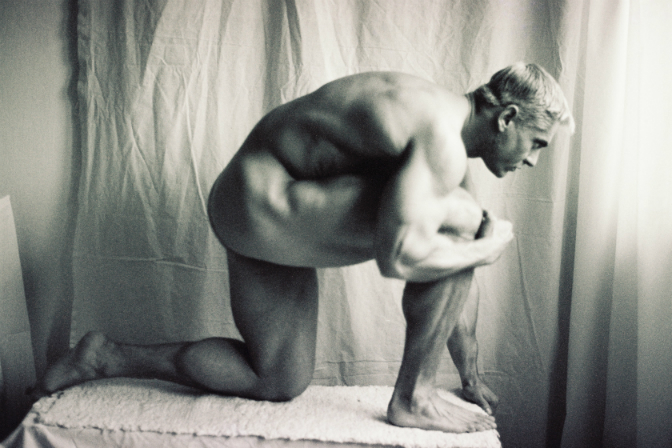
Károly Halász: Body-builder in Renaissance manner, 2000. Courtesy of the Artist
If one tries to find the content „under the skin” of the male body, the show at the Ludwig has its depth and deliberation on the one hand and fantastically rich on the other. Of the 5 female curators 3 – Sabine Fellner, Elisabeth Nowak-Thaller and Stella Rollig – represent the partner institution from Linz, the other 2 – Hedvig Turai and Kati Simon – work for the Ludwig. The show in Linz last year was the result of the cooperation of the two museums, the exhibition in Budapest is a variation made in a slightly East European manner. In every detail of the show its apparent that it was not arranged in a different cultural background, but follows a coherent conception which is impregnated with the knowledge of East-European mentality.
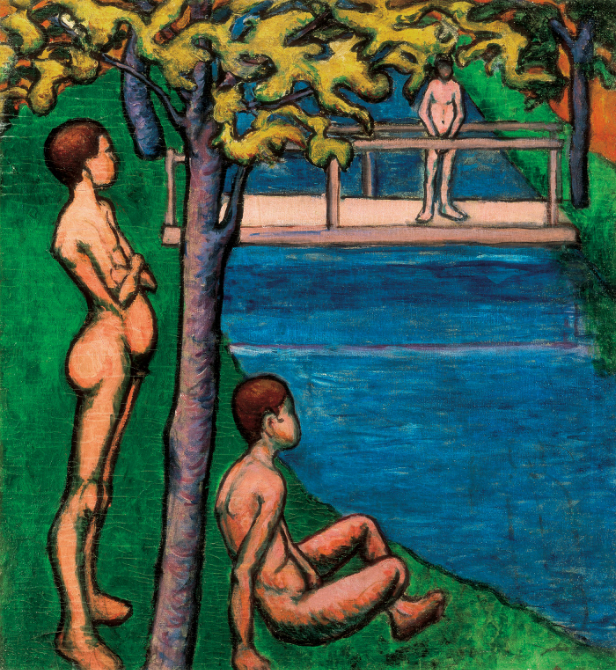
Lajos Tihanyi: Bathers, 1907. Hungarian National Gallery, Budapest
The Naked Male deserves to be examined closely and let ourselves be open to its effects without any kind of prejudice. In the first hall we meet the lifesize self-portrait by Hungarian artist László Lakner, made in the 70's. The picture is owned by the Uffizi Gallery and this is the first time it is displayed in Hungary. The portrait is faced by the photograph by Spencer Tunick, in which several naked boys are looking at the visitors, as if they came from all the pictures of the show just to unite in a grand tableau
The same exciting fullness is apparent in all the exhibition halls. The 8 sections of the exposition gives a unique representation of the changes in male identity from the early 20th century up to the last few years. The beginning is marked by the works of Wilhelm von Gloeden, István Szőnyi, Károly Kernstok, Lajos Tihanyi and Béla Uitz – masters of the recreation of classical models in nature. This section is followed by the body cult of the first decades of the 20th century accompanied by the male nude as the medium of new scientific methods – this latter is represented by Eadweard Muybridge's motion-phase series.
|
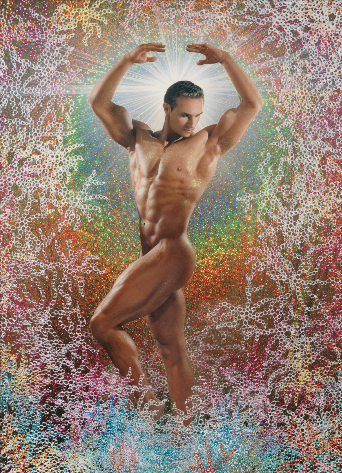
|
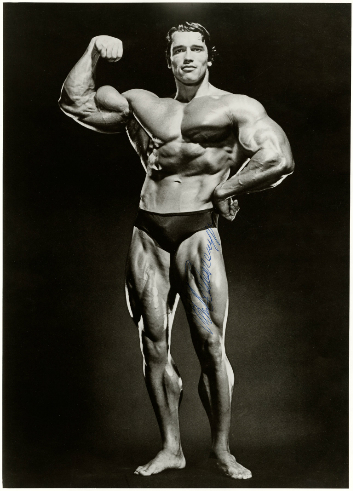
|
| Pierre et Gilles: Apolló, 2005 (Modell: Jean-Christophe Blin). © Pierre et Gilles. Courtesy Galerie Jerome de Noirmont |
Jimmy Caruso: Arnold Schwarzenegger, 1978. Münchner Stadtmuseum |
It is rather difficult to choose from the more than 130 pieces of art work. The video „Male Baths” by Katarzyna Kozira is a great experience (the video was awarded the grand prize of the Venice Biennale in 1999). Kozyra was making her film in the male sauna of the Gellert Baths in Budapest (masked as a man) and recorded the spontaneous connections of male bodies. Unforgettable is the young man painted in a „Venus-pose” , through whose body Sylvia Sleigh presents how the strong male body gets a female, passive character by a historic topos.
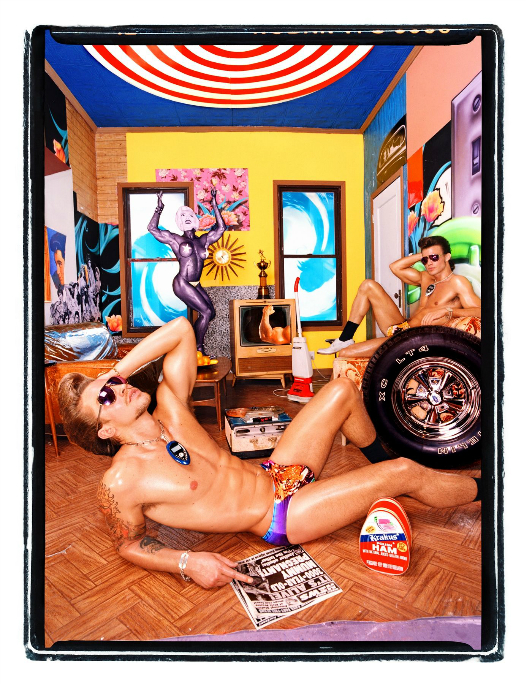
David LaChapelle: Celebrity Gleam, 2002. Courtesy of Galerie Thomas, Munich
It is highly probable that after leaving the museum the visitor has more questions to ask then when they entered. It is for these questions that the exhibition was arranged. But it was not made to focus on the male nudity alone; the free vision of female bodies, the changes of male images, the ways of experiencing masculinity, the connection between body and power are equally important themes. Guided tours and lectures at the Ludwig Museum help the visitors not to feel left alone in the environment of intensive body experience.
The Naked Man is open at the Ludwig Museum until June 30th, 2013
Photos: Ludwig Museum – Contemporary Art Museum